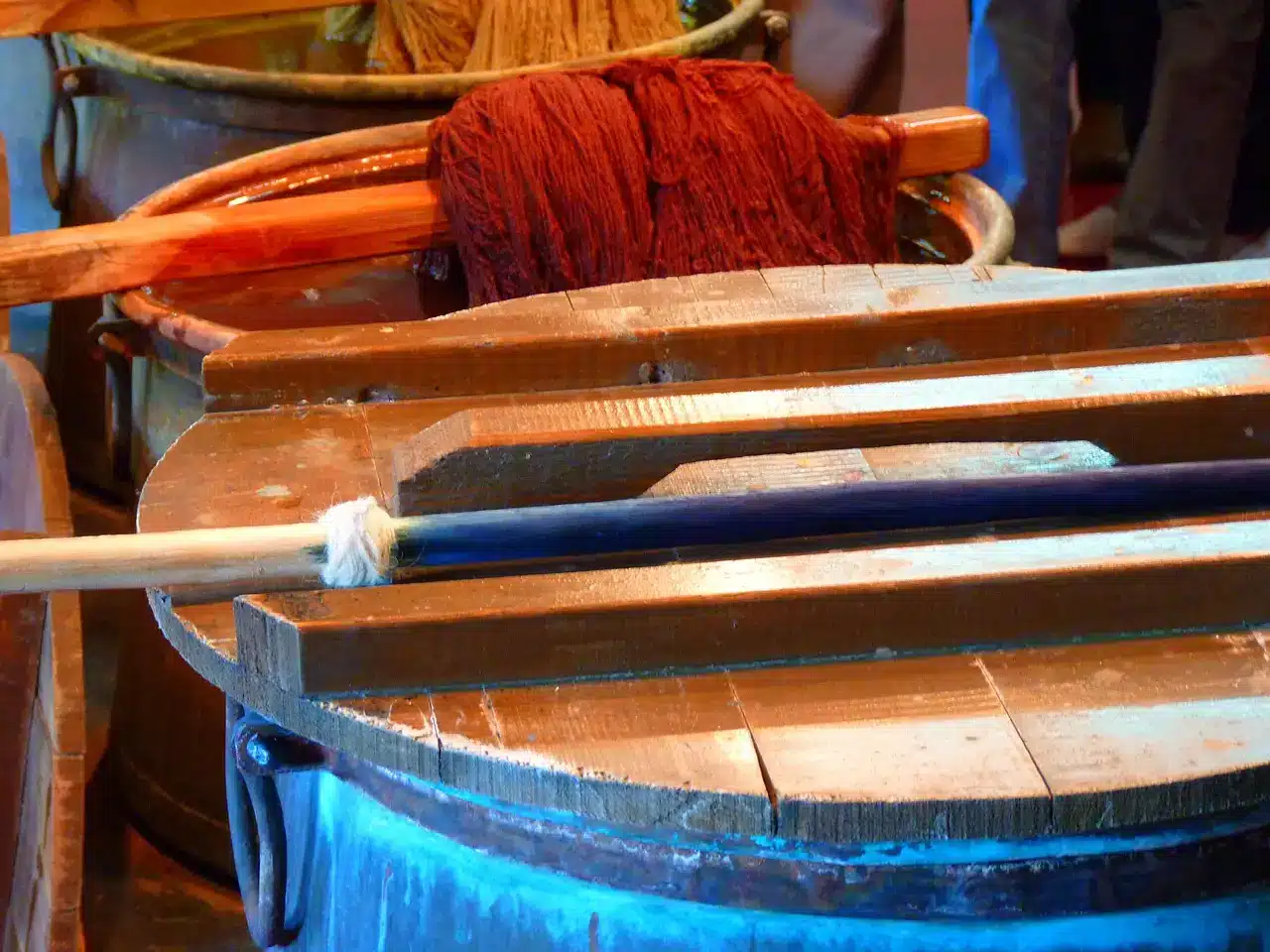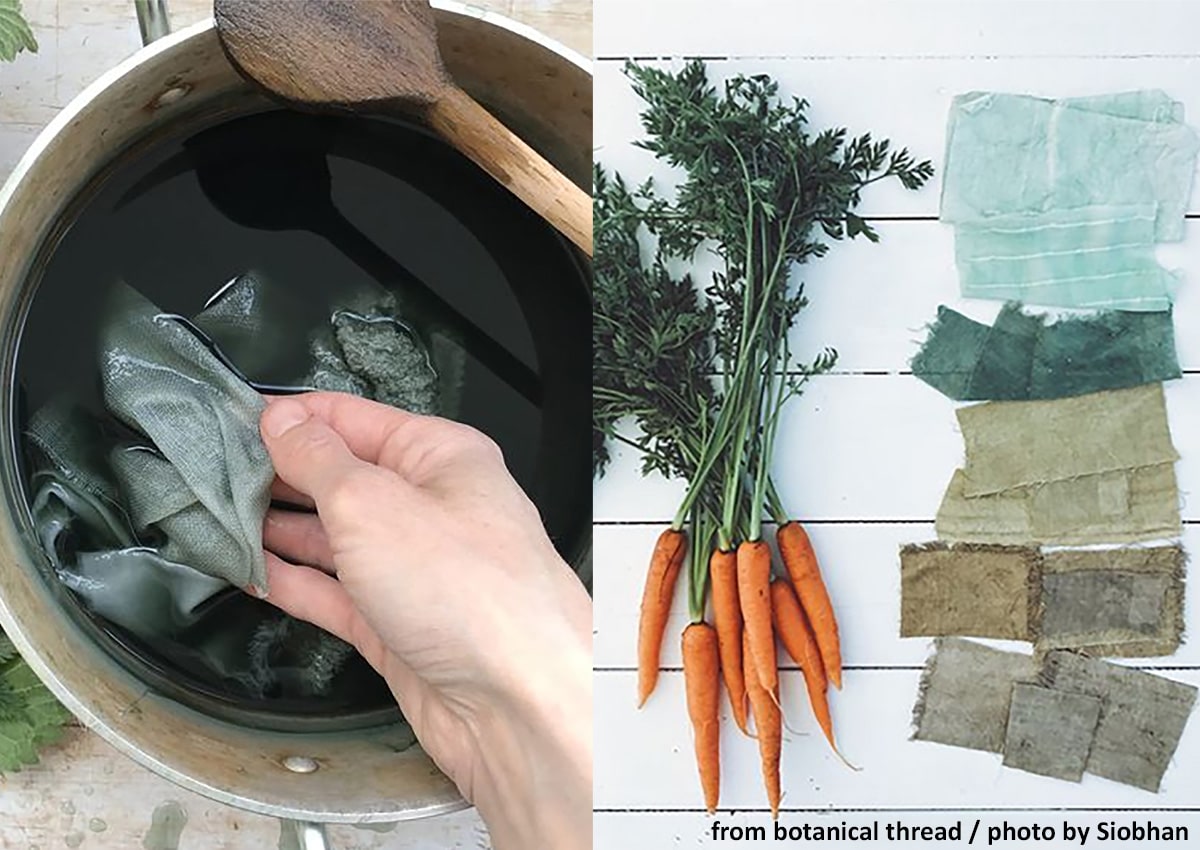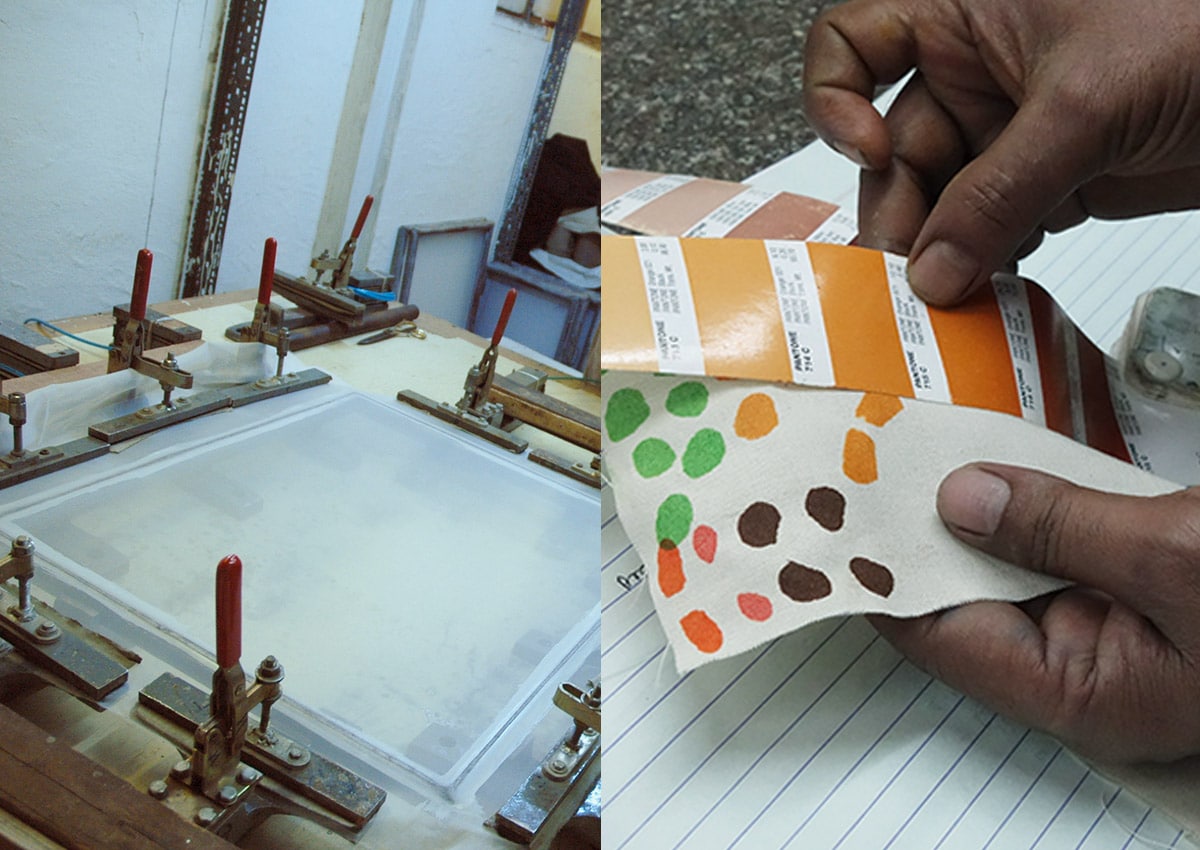Atelier de teinture naturelle
L’été est bien là, et l’on a tout d’un coup l’envie de porter de la couleur vive, ou douce, ou pastel, mais en tout cas de la couleur !
Que vous souhaitiez redonner un coup de jeune à des vêtements que vous ne portez plus, ou teindre un bête t-shirt en coton blanc pour le rendre unique, la teinture DIY sera un excellent moyen d’atteindre cet objectif tout en s’amusant… et en faisant preuve d’écoresponsabilité ! Car la plupart des teintures végétales DIY peuvent être tout simplement réalisées à partir de vos déchets alimentaires.
Les Mouettes Vertes vous expliquent pas à pas comment vous y prendre pour renouveler votre garde-robe sans une once de produits chimiques !
1. Préparer le tissu
Première étape, choisir et préparer votre tissu. Comme vous utiliserez des teintures naturelles pour colorer vos vêtements et textiles, mieux vaut choisir des fibres naturelles, qui absorberont mieux la couleur : le coton, le chanvre, le lin, ou encore la laine en pelote seront idéaux ! Attention toutefois à ne pas les exposer, au cours du procédé, à des températures trop élevées pendant plus d’une heure, afin qu’ils ne rétrécissent ni ne se déforment.
De plus, lors de la teinture, la couleur pénètre les fibres du tissu et se mélange à leur teinte originelle. Si vous souhaitez obtenir une couleur pure, mieux vaut donc pratiquer la teinture sur textile blanc ou écru. Sinon, il faudra respecter la règle des mélanges, et bien planifier votre couleur d’arrivée !

Avec les lavages successifs et l’exposition à la lumière, la couleur d’un tissu peut se faner si elle n’est pas bien fixée. C’est pourquoi tout atelier de teinture naturelle commence par la préparation du tissu, aussi appelé mordançage. D’abord, lavez votre coupon de tissu, sans le sécher.
Si vous utilisez des baies ou des fruits pour teindre votre tissu, il vous faudra au préalable le faire bouillir pendant une heure avec de la poudre d’alun (10% du poids du textile que vous souhaitez colorer). Si vous utilisez des feuilles ou des racines, faites plutôt bouillir le tissu dans un mélange de 4 volumes d’eau pour 1 volume de vinaigre blanc pendant une heure.
Et voilà, votre tissu est prêt à passer à la teinture !
2. La teinture
Vous ne vous en doutiez peut-être pas, mais la solution à vos problèmes de vêtements se trouve… dans votre cuisine ! Pour obtenir de jolies nuances, vous pouvez utiliser aussi bien des feuilles, des racines ou des noix, que des épices et des épluchures. Voici un petit aperçu des matières que vous pouvez travailler :
- Pour obtenir des tons orangés et jaunes : pelures d’oignon, de carotte, de potimarron ou de citrouille, ou encore des feuilles de céleri et du curcuma.
- Pour des nuances de brun et de beige : du thé ou du café, des racines de pissenlit, pomme de pin ou encore des feuilles de bouleau.
- Pour de jolis rouges violacés : des fleurs d’hibiscus, des feuilles de basilic, du raisin noir ou du chou rouge, des pelures d’avocat et du cassis.
- Pour des tons verts : de l’artichaut, des feuilles de menthe, des fougères, des épinards, ou encore des feuilles de pêcher ou de figuier.
- Pour la couleur bleue : de l’indigo, des myrtilles, de la spiruline ou encore des fleurs de lavande.

Pour préparer votre teinture, hachez votre ingrédient de base, mettez-le à bouillir pendant une heure, puis filtrez une fois la couleur désirée obtenue. Plongez le textile dans la solution et remuez, à feu moyen, pendant encore une heure. Pour que la couleur s’imprègne mieux, vous pouvez aussi laisser le tissu à trempez pendant tout une nuit !
Rincez le tissu, et mettez-le à sécher. Et hop, il est prêt à l’emploi !
3. Quelques trucs et astuces
Les premières expérimentations en matière de teinture DIY sont toujours un challenge… Mais rassurez-vous, voici quelques astuces pour éviter les mauvaises surprises !
Pour éviter que votre solution de teinture ne tache vos mains ou vos vêtements, pensez à porter un tablier et des gants. Même sans les faire bouillir, certains ingrédients, comme le curcuma, sont indélébiles !
Une fois votre vêtement coloré, veillez à le laver à basse température, et séparément du reste de votre garde-robe. Vous éviterez ainsi les transferts de couleur accidentels !
Et pour devenir un expert ? Il existe de nombreux guides de la teinture naturelle, dont ces quelques références qui nous ont beaucoup plu :
- Le Guide des teintures naturelles, de Marie Marquet (Belin, 2011) : pour en savoir plus sur les plantes à fleurs et leurs propriétés tinctoriales.
- Le Guide de la teinture végétale, d’Abigaïl Booth (Dessain et Tolra, 2019) : pour en apprendre sur la teinture, tout en s’initiant à des projets simples de couture !
- Et enfin, Teintures végétales d’Aurélia Wolff (Eyrolles, 2018) : avec des passages passionnants sur l’histoire de la teinture.
Conclusion : et nous, dans tout ça ?
Profondément attachées à la protection de l’environnement, Les Mouettes Vertes n’utilisent que des encres respectueuses de l’environnement pour teindre et imprimer leurs produits, selon le cahier des charges des labels GOTS et OEKO-TEX.


